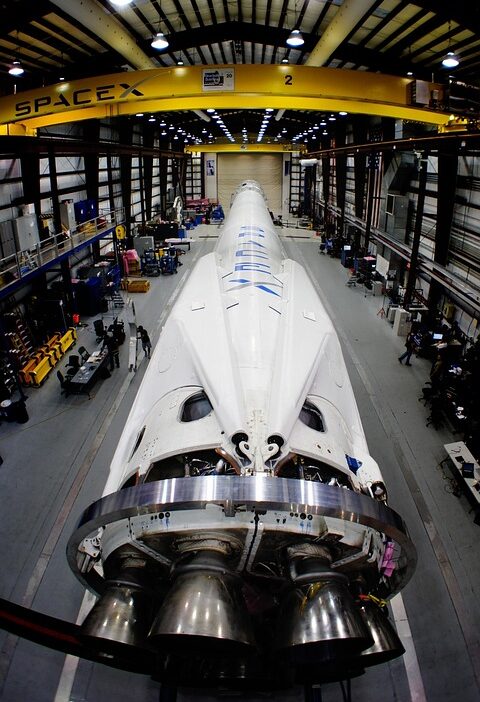In recent years, the landscape of space exploration and commercialization has dramatically transformed, largely driven by the innovative efforts of private companies like SpaceX in partnership with longstanding government entities like NASA. This collaboration heralds a new era of public-private partnerships in space, characterized by shared goals, reduced costs, and an acceleration of technological advancement.
The Genesis of Collaboration
NASA, founded in 1958, has a rich history of space exploration marked by iconic missions such as Apollo, Voyager, and the Space Shuttle program. However, by the early 2000s, the agency faced significant budget constraints and a changing political climate, which raised questions about its ability to maintain leadership in space. Enter SpaceX, founded in 2002 by Elon Musk, with a mission to reduce space transportation costs and enable the colonization of Mars.
After several years of development and numerous challenges, SpaceX achieved a breakthrough in 2008 with the Falcon 1 rocket becoming the first privately developed liquid-fueled rocket to reach orbit. This success captured NASA’s attention, leading to collaborations that would redefine space exploration.
Commercial Crew Program: A Milestone Partnership
One of the most notable achievements in the public-private partnership between NASA and SpaceX is the Commercial Crew Program. Initiated in 2010, this program aimed to foster private sector involvement in transporting astronauts to and from the International Space Station (ISS). After years of development, SpaceX’s Crew Dragon spacecraft successfully transported NASA astronauts to the ISS in May 2020, marking the first crewed launch from U.S. soil since the final Space Shuttle mission in 2011.
This landmark event not only showcased the effectiveness of the partnership but also demonstrated the potential for commercial entities to contribute meaningfully to human spaceflight. By leveraging SpaceX’s technological innovations and NASA’s expertise and infrastructure, the partnership was able to achieve remarkable feats more efficiently than traditional methods would have allowed.
Cost-Effectiveness and Innovation
One of the defining aspects of the public-private partnership is its cost-effectiveness. Through contracts like Commercial Crew and the Cargo Resupply Services (CRS) program, NASA has incentivized SpaceX to develop more cost-efficient launch systems. SpaceX’s ability to reuse rockets, exemplified by the Falcon 9’s first stage recovery, has significantly reduced the cost of sending payloads into orbit. This innovation not only benefits NASA but also opens the door for other commercial entities and research organizations to participate in space missions affordably.
Moreover, the competition fostered by partnerships with multiple private companies has spurred innovation across the industry. With companies like Boeing, Blue Origin, and others entering the arena, NASA can leverage a diverse array of technologies and solutions, enhancing its capabilities and insulating itself against potential delays or failures.
Expanding Horizons: Lunar Missions and Beyond
Looking forward, NASA’s Artemis program aims to return humans to the Moon by 2024, with the goal of establishing a sustainable presence there as a precursor to future Mars missions. SpaceX plays a crucial role in this program, having been selected to develop a lunar lander called Starship for Artemis missions. This collaboration is expected to pave the way for further exploration into deep space, including manned missions to Mars.
The partnership between SpaceX and NASA also serves as a model for international collaborations, encouraging nations to work together in exploration efforts. SpaceX’s successes have attracted global interest, prompting other countries to consider robust partnerships with private entities to bolster their space agendas.
Challenges and Considerations
While the partnership has yielded substantial benefits, it has also faced challenges. Issues related to safety, regulatory compliance, and the inherent risks of space travel remain paramount. Ensuring that the private sector adheres to NASA’s strict safety standards is critical to maintaining public trust in space exploration.
Additionally, there are concerns regarding the long-term implications of privatizing space exploration. While partnerships can accelerate innovation and reduce costs, ensuring that these advancements are accessible and beneficial to humanity as a whole is essential.
Conclusion
The collaboration between SpaceX and NASA exemplifies a transformative shift in how space exploration is conducted. By harnessing the strengths of both public and private sectors, they are not only charting a new course for human spaceflight but also laying the groundwork for the next era of exploration. As we set our sights on Mars and beyond, the synergy between these two entities may well serve as a blueprint for future endeavors in our quest to explore the cosmos. The future of space exploration is brightly illuminated by this union, and it promises to expand our understanding of the universe while inspiring future generations.



